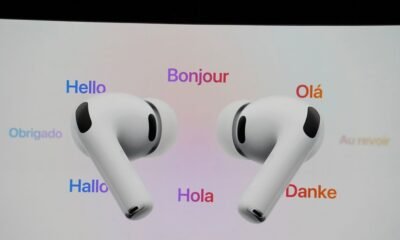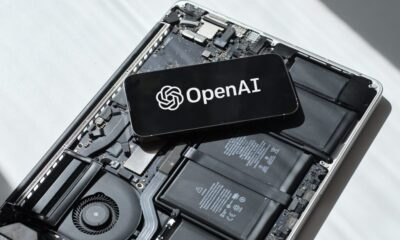Tools & Platforms
OpenAI backs AI-animated film for Cannes debut
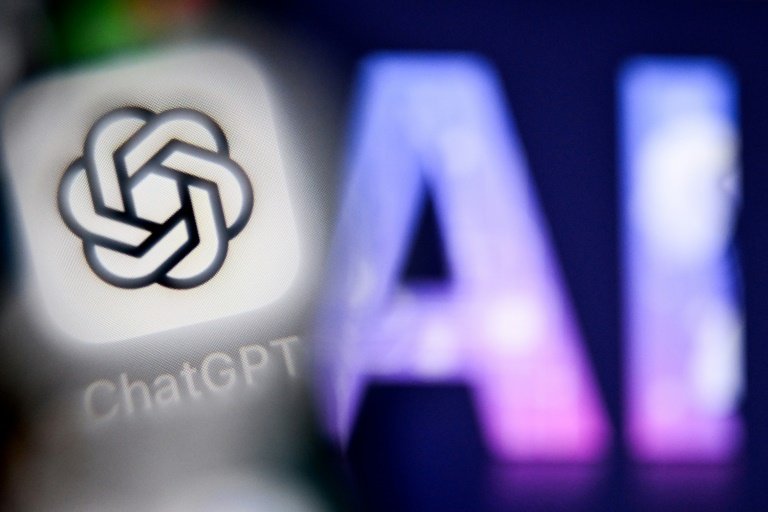
The production will blend AI technology with human work – Copyright AFP/File Kirill KUDRYAVTSEV
ChatGPT-maker OpenAI is backing the production of a feature-length animated film created largely with artificial intelligence tools, aiming to prove the technology can revolutionize Hollywood filmmaking with faster timelines and lower costs.
The movie, titled “Critterz,” follows woodland creatures on an adventure after their village is disrupted by a stranger, with producers hoping to premiere at the Cannes Film Festival in May 2026 before a global theatrical release, they said in statement on Monday.
The project has a budget of under $30 million and a production timeline of just nine months — a fraction of the typical $100-200 million cost and three-year development cycle for major animated features.
“Critterz” originated as a short film by Chad Nelson, a creative specialist at OpenAI, who began developing the concept three years ago using the company’s DALL-E image generation tool.
Nelson has partnered with London-based Vertigo Films and Los Angeles studio Native Foreign to expand the project into a full-length feature.
“OpenAI can say what its tools do all day long, but it’s much more impactful if someone does it,” Nelson said in the news release. “That’s a much better case study than me building a demo.”
The production will blend AI technology with human work.
Artists will draw sketches that are fed into OpenAI’s tools, including GPT-5 and image-generating models, while human actors will voice the characters.
The script was written by some of the same writers behind the successful “Paddington in Peru.”
However the project comes amid intense legal battles between Hollywood studios and AI companies over intellectual property rights.
Major studios including Disney, Universal and Warner Bros. Discovery have filed copyright infringement lawsuits against AI firm Midjourney, alleging the company illegally trained its models on their characters.
The film is funded by Vertigo’s Paris-based parent company, Federation Studios, with about 30 contributors sharing profits through a specialized compensation model.
Critterz will not be the first animated feature film made with generative AI.
In 2024, “DreadClub: Vampire’s Verdict,” considered the first AI animated feature film and made with a budget of $405, was released, as well as “Where the Robots Grow.”
Those releases, as well as the original “Critterz” short film, received mixed reactions from viewers, with some critics questioning whether current AI technology can produce cinema-quality content that resonates emotionally with audiences.
Tools & Platforms
Can Generative AI transform healthcare?
Generative AI may be the fastest-adopted technology in history, but in healthcare it is still largely seen through the narrow lens of chatbots. That perception, argued experts at WHX Tech-EHS Summit in Dubai during a panel discussion, risks blinding policymakers and providers to its deeper potential, and to the barriers that stand in its way.
“It’s like saying the internet is only e-mail,” said Christian Hein, former Novartis vice-president for digital transformation. “Chatbots are just the front-end. The real power lies in what sits beneath, which is an information engine capable of synthesising scientific literature, drafting clinical trial protocols, automating reimbursement coding and extracting unstructured data from medical records.”
The discussion, moderated by health AI consultant Sigrid Berge van Rooijen, opened with a question: Is generative AI destined to remain a glorified customer-service tool?
For Tatyana Kanzaveli, founder of Open Health Network, the danger lies in merely bolting new technologies onto outdated systems. “We cannot just deploy GenAI to augment old business processes,” she said. “Imagine agentive AI predicting when MRI equipment is about to fail, ordering the part, scheduling the engineer and coordinating the fix automatically. Or a digital twin monitoring your health data, arranging prescriptions, transport and care without you lifting a finger. That is the world we should be building.”
Bharat Gera, who has spent 25 years working on digital health transformation, echoed the need for caution but also saw promise in simple tools such as summarisation. “Doctors spend huge amounts of time reading patient histories. Summarisation is a powerful use case, here and now,” he said. But he warned against overloading clinicians with alarms and unvalidated signals: “Healthcare is fundamentally human. If we forget that, technology will make things worse.”
Regulation, risk and responsibility
If technology is racing ahead, regulation is struggling to keep pace. Amil Khanzada, CEO of Virufy, highlighted how laws differ dramatically across jurisdictions. “In Dubai, anonymised medical data cannot be sent overseas. In Pakistan, there isn’t even a privacy law yet. Patients have the right to delete their data, but what happens once that data has already trained a model? Do you retrain it from scratch?”
Consent forms, he added, are another minefield. “You can try to use generative AI to summarise them, but you still need human validation. And patients often sign without reading. The legal and ethical risks are enormous.”
Kanzaveli pointed to the dangers of misplaced trust. “Generative AI is persuasive. You trust it. But in healthcare, a wrong answer can mean a missed diagnosis, or worse. We spent longer building the risk-management framework for a virtual psychologist than we did building the engine itself. That is our responsibility.”
The human factor
Perhaps the most sobering intervention came from Anne Forsyth, Vice-Chair of Digital Health Canada and IT lead at Toronto’s Women’s College Hospital. She recounted how a cancer diagnosis was delayed for a year because test results were stuck in a hospital IT interface. “What do you tell the patient? Tech will never be perfect. We must always plan for failure,” she said. “If you are building GenAI tools for hospitals, think about what happens when they fail, and what supports clinicians will have.”
Hein agreed. “Technology is easy. Change is the hard part. The real work is persuading people that you are there to augment, not replace them. Without that, AI will never scale.”
A future too important to ignore
Despite their differing emphases, the panellists agreed that generative AI is already reshaping healthcare and that ignoring it is not an option. “There is no industry that can remain competitive without deploying these technologies,” Kanzaveli said. “The only question is how responsibly we do it.”
As Berge van Rooijen concluded, the challenge is not whether generative AI is more than a chatbot. It clearly is. The question is how to harness its promise without repeating the mistakes of past digital health revolutions, and without losing sight of the people at the heart of the system.
Tools & Platforms
Laptop or tablet? Plus, power packs, headphones and AI advice – The Irish Times
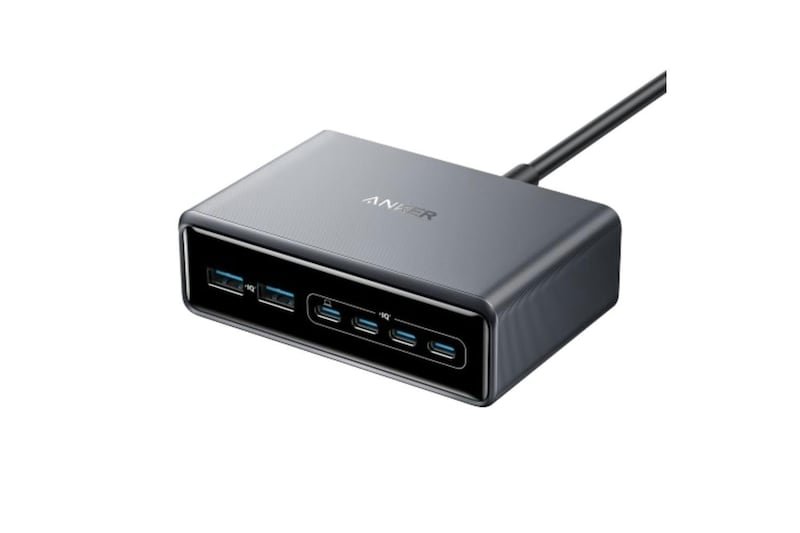
College students are coming back to their lecture halls this week or starting out on their third-level studies. If you are an incoming first year, there is plenty to get to grips with, from reading lists and schedules to travel passes and finding your way around the campus.
On top of that, you probably have some extra technology requirements. Perhaps a laptop upgrade is on the cards or you might think of investing in a tablet.
So what are the tech essentials and what are simply nice to have?
Laptops
The laptop is not yet dead, despite some predictions of its demise. In fact, things seem to be going well for the device the tablet was supposed to replace.
Picking the right one can be difficult, though; you need to strike a balance between a laptop that will last a few years and not overpaying for technology you don’t actually need. In other words, the top-spec machines are great but they aren’t necessary for everyone.
There are some things to consider before you make your choice. First is the size of the device. If you plan on carrying it around everywhere, something reasonably compact and light is best. Most people find the 13- to 14-inch screens offer the best balance in terms of portability while still giving you enough room to work with.
That should cover you for creating documents, browsing online, editing images and videos, and creating content for your social channels if that is what you are into.
For those who need something with a bit more screen space – for design, perhaps – a 15-inch display might suit better, but will be more clunky to carry around.
Once you have decided on the size, it is time to look at its main components. Think of the processor as the brain of the computer. On a budget, the AMD Ryzen 3 series or Intel Core i3 will be fine for web browsing and word processing.
Moving up the chain, AMD’s Ryzen 5 offers a good balance of performance and efficiency, comparable to the Intel Core i5 chip. For more demanding tasks, the Ryzen 7 or Core i7 chips are worth considering, although they will incur a higher cost.
Then you get into RAM, which will allow your computer to deal with heavier workloads and run more tasks at once without stuttering to a halt. Windows requires a minimum of 4GB. Bumping it to 8GB is sufficient for basic workloads.
To ensure your computer lasts longer, consider upgrading to 16GB if possible. Video editing, photo editing, gaming and other power-hungry applications will need more RAM, so consider your future needs too.
And when it comes to on-board storage, aim for 512GB if you can. You can supplement it with external and cloud storage, but that requires either carrying around a second device – not ideal if you want to stay mobile – or an internet connection, which isn’t always possible.
Mac versus Windows is the ongoing battle, but ChromeOS is also an option for students on a budget, or Linux if you are technically inclined. The decision will ultimately depend on what software you need to run. If you have no specific requirements, then your choices are much wider. Some students will need to run specific software for their course – computer-aided design programmes, for example – that will have minimum system requirements.
Power
If you have a new-ish laptop with a power-efficient chip, you probably won’t run into too many issues with your device’s battery. But occasionally, they take a battering, and when you find your battery dwindling to alarming levels, having some sort of backup is handy.
Doing more with less is a good approach, and these days most devices can be charged over USB-C, thanks to some heavy nudges from the European Commission. In theory, you could carry one charger in your bag and power all your devices at various times throughout the day.
If you need more than one device charged, though, something with multiple USB options is a good idea. Take the Anker GaNPrime 200W Charger (€90, Harvey Norman). Not only does it charge both USB-A and USB-C devices, it can also power up to six devices simultaneously.
It has a total power rating of 200W, which means you can charge two 14-inch MacBook Pro devices in under half an hour or several USB-C-enabled smartphones simultaneously. It also has a built-in protection system to make sure your devices charge safely and at a suitable temperature.
However, there will inevitably be a time when you are away from a power outlet and caught with a low battery. The Chargeasap Flash Pro Plus ($200, chargeasap.com), a graphene 25000mAh battery, cannot only charge your smartphone and Apple Watch, but also your laptop.
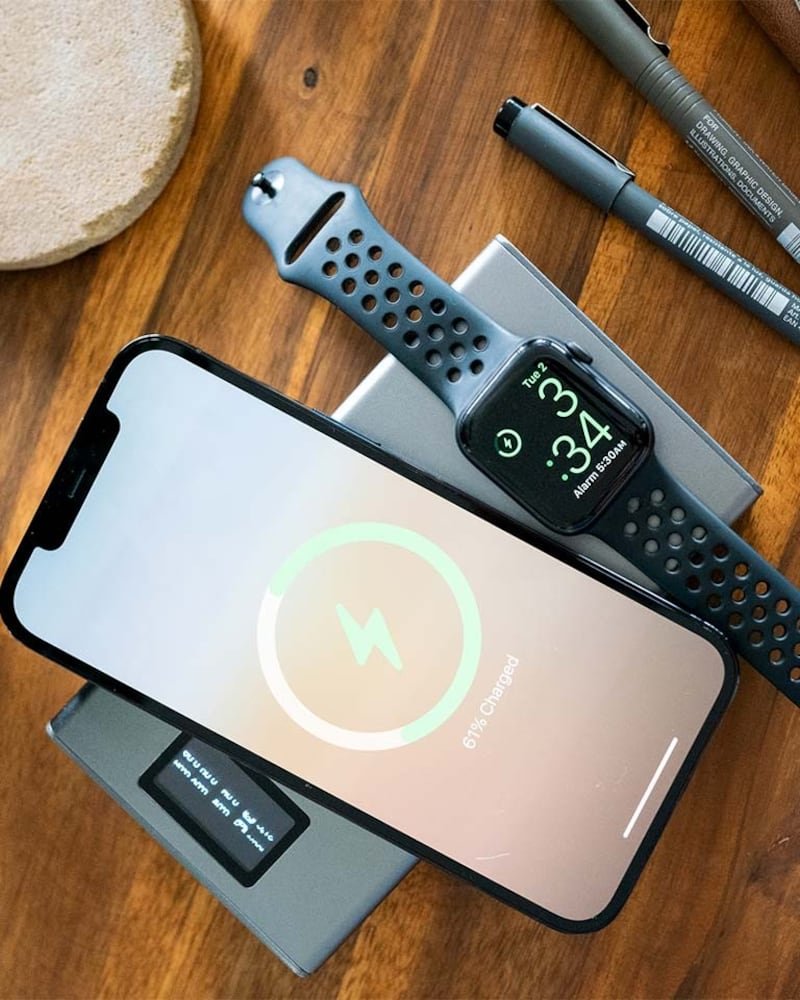
Noise-cancelling headphones
If you don’t already own a pair of these, you need to invest in some, asap. Not only can they help you to block out the bus noise on the commute home, they may also save your sanity in the library around exam time. Among the best in the over-ear category are the Sony WH-1000XM6 (€450, Currys).
Apple users may prefer the in-ear AirPods Pro (€279, Apple), but there are plenty of options out there that will cross the platform barrier and work with your laptop too, such as the Bose QuietComfort Active ear buds (€150, Harvey Norman)
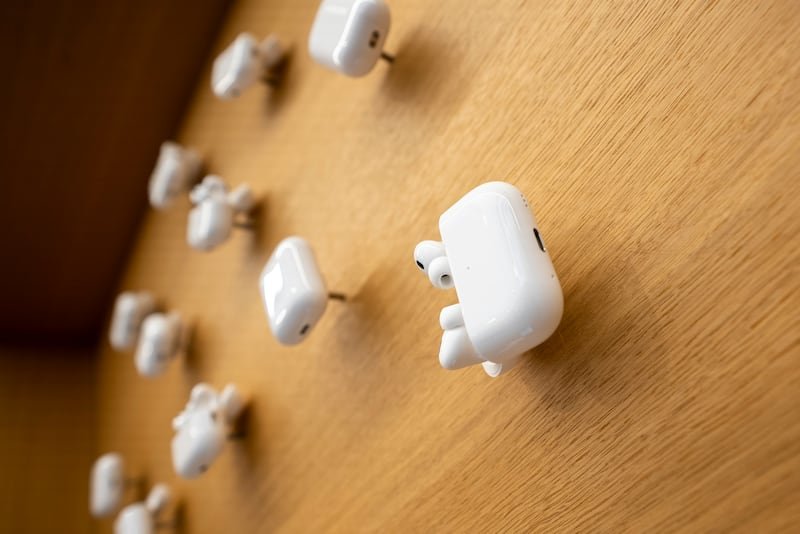
If you are just in need of some decent earplugs without any added distraction, however, the Loop Quiet 2 (€20, Loop.eu) will block out enough noise to help you focus.

AI
Artificial intelligence is creeping into our daily lives, from AI-enabled chatbots talking us through customer service nightmares to research assistants that can create podcasts from our documents and debate the finer points of our research topic.
The capabilities out there vary, however. Apple is still trailing slightly on AI integration. although devices such as the iPhone 15 Pro and Pro Max, and newer models, support the handful of Apple Intelligence features that have been launched in Europe. That includes tools to manage your inbox, refine messages and documents, and edit photographs. Broader searches call in ChatGPT.
Samsung and Google have taken it a step further. Gemini, Google’s AI-enabled assistant, has now become the default assistant on your smartphone, with its latest Gemini machine learning models and chatbots integrated into the system.
There are other ways to use AI, however, assuming your college course allows it. Grammarly, for example, will help you polish up college projects and essays, while also keeping an eye out for potential plagiarism, assuming you take out the Pro subscription at €144 for the year. Its verdict on this article, for example, was a resounding “zero copied text”.
[ I have advice for prospective third-level students, and it’s not what you thinkOpens in new window ]
ChatGPT, meanwhile, can help you research a specific topic with its latest GPT-5 model which, according to founder Sam Altman, has “PhD level intelligence”. Whether you buy into that or not, ChatGPT can be a handy research partner. Just remember, as with all AI, to check up on its sources before you believe what it tells you.
The current favourite AI-enabled tool around here though is Google’s NotebookLM. Free to use, you can create notebooks for research topics with up to 50 sources each. The AI will then analyse the sources and explain it to you in bullet points, create an FAQ-style sheet or study guide, or even generate an AI podcast, where two synthetic hosts discuss the topic in detail.
Tools & Platforms
Deutsche Telekom Leverages n8n’s Automation Platform to Power Next-Gen AI Agents

AI agents are currently the dominant topic in the digitization scene. Deutsche Telekom announced its partnership with n8n. The German startup from Berlin, which is popular with developers and investors, is a specialist in the digitization of repetitive workflows.
n8n is currently valued far beyond the threshold of 1 billion euros. Deutsche Telekom relies on n8n for the development of AI agents for its business customer division. Whether in production, logistics, accounting or sales and marketing: the application scenarios are diverse, especially in medium-sized companies.
AI agents for all cases
AI agents are software programs that independently plan tasks, take measures and make decisions for a specific goal with the help of artificial intelligence, without constant human guidance. N8n is an open-source workflow automation platform. Depending on the use case, different apps, interfaces and services can be combined with each other. The code is created by the AI. Only basic programming knowledge is required. The offer is primarily aimed at medium-sized companies.
Three different models serve as the basis for the development of tailor-made AI agents:
-
Out-of-the-box standard AI agents for simple tasks such as appointment finders or interactive voice response systems (IVR) -
AI agent modular system for creating custom agent flows via drag and drop -
Fully individualized AI agent flows with customized service
The first pilot projects are testing its use, for example in logistics: Until now, freight documents have been passed on manually. This process is now taken over by an AI agent.
Deutsche Telekom has been using artificial intelligence for many years. The group relies on partnerships for the best AI solutions on the market and collaborative development. The following applies: AI should solve business problems and increase productivity – while maintaining a focus on the well-being of people.
Gartner predicts that by 2028, AI agents will take over 20 percent of interactions in online stores. In the workplace, they will make 15 percent of everyday decisions, according to the market research institute, up from zero percent in 2024. And: By 2028, 33 percent of software in companies will contain agentic AI, compared to less than one percent in 2024.
Maximilian Ahrens, Managing Director T Digital, Telekom Deutschland
We are very proud that we are working with what is currently the most prominent tech startup from Germany. With n8n’s platform and technology, we make it easy for our customers to implement AI-supported processes and future-proof their business
-

 Business2 weeks ago
Business2 weeks agoThe Guardian view on Trump and the Fed: independence is no substitute for accountability | Editorial
-
Tools & Platforms4 weeks ago
Building Trust in Military AI Starts with Opening the Black Box – War on the Rocks
-

 Ethics & Policy2 months ago
Ethics & Policy2 months agoSDAIA Supports Saudi Arabia’s Leadership in Shaping Global AI Ethics, Policy, and Research – وكالة الأنباء السعودية
-

 Events & Conferences4 months ago
Events & Conferences4 months agoJourney to 1000 models: Scaling Instagram’s recommendation system
-

 Jobs & Careers2 months ago
Jobs & Careers2 months agoMumbai-based Perplexity Alternative Has 60k+ Users Without Funding
-

 Education2 months ago
Education2 months agoVEX Robotics launches AI-powered classroom robotics system
-

 Podcasts & Talks2 months ago
Podcasts & Talks2 months agoHappy 4th of July! 🎆 Made with Veo 3 in Gemini
-

 Education2 months ago
Education2 months agoMacron says UK and France have duty to tackle illegal migration ‘with humanity, solidarity and firmness’ – UK politics live | Politics
-

 Funding & Business2 months ago
Funding & Business2 months agoKayak and Expedia race to build AI travel agents that turn social posts into itineraries
-

 Podcasts & Talks2 months ago
Podcasts & Talks2 months agoOpenAI 🤝 @teamganassi








